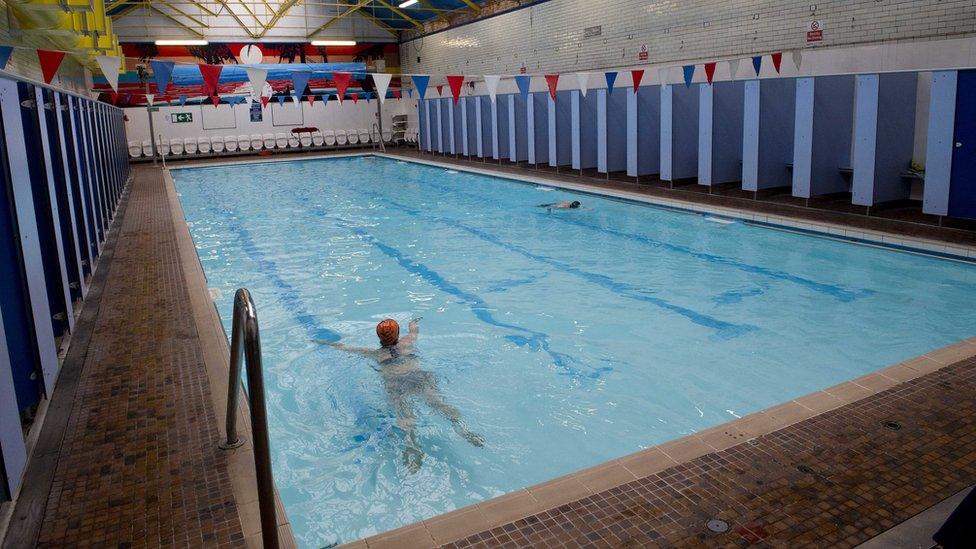Templemore Baths restoration a 'painstaking labour of love'
- Published

The Templemore Baths are based in east Belfast and have been functioning for almost 140 years
It has been described as a "painstaking labour of love", with workers embracing construction methods and materials from days long gone by.
Now the job of restoring Templemore Baths in east Belfast is coming close to completion.
The baths at Templemore are the last functioning Victorian public baths on the island of Ireland, having first opened in 1883.
The restoration project, which was conceived in 2014, has cost £17m.
A major extension will provide an additional 25m (82ft) pool with six lanes, while there is also an 80-station fitness suite, spa facilities, a cafe and visitor centre.
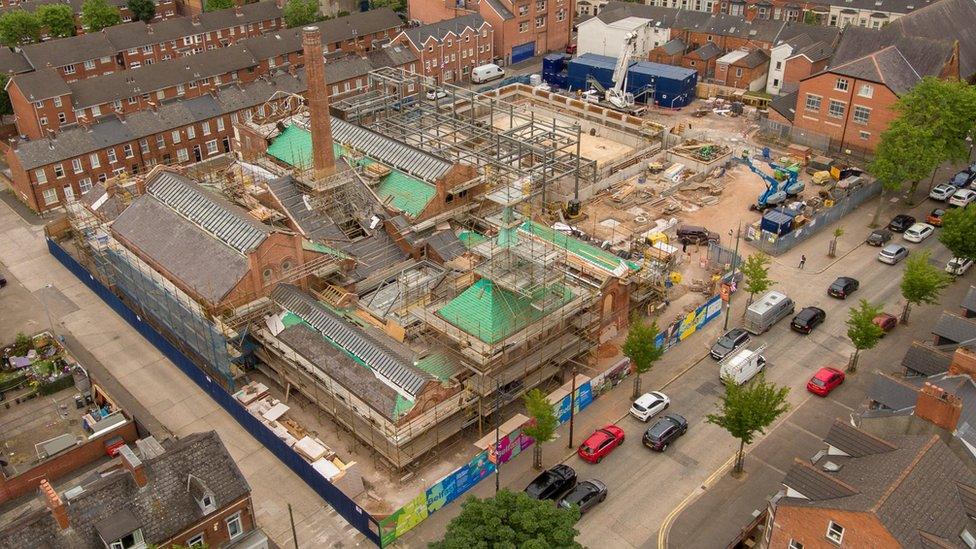
The site at Templemore Avenue has been a hive of activity in recent years as the rebuild took pace
The new building will link "sympathetically and softly" with the original, according to site manager Diarmuid Mullan.
"It was about getting the balance right between the new and the old," he said.
From soap to swimming
The original building on Templemore Avenue was designed by Robert Watt, construction began in 1881 and it was opened as the Ballymacarret Baths in 1883.
Further work was undertaken in 1929 with a swimming pool extension to accommodate Olympic hopefuls.
The baths were an essential facility for Harland & Wolff dock workers and their families who did not have access to hot water at home.
Built on a former hospital site, the Templemore Baths have adapted their usage throughout the years - it was a makeshift morgue during World War Two.
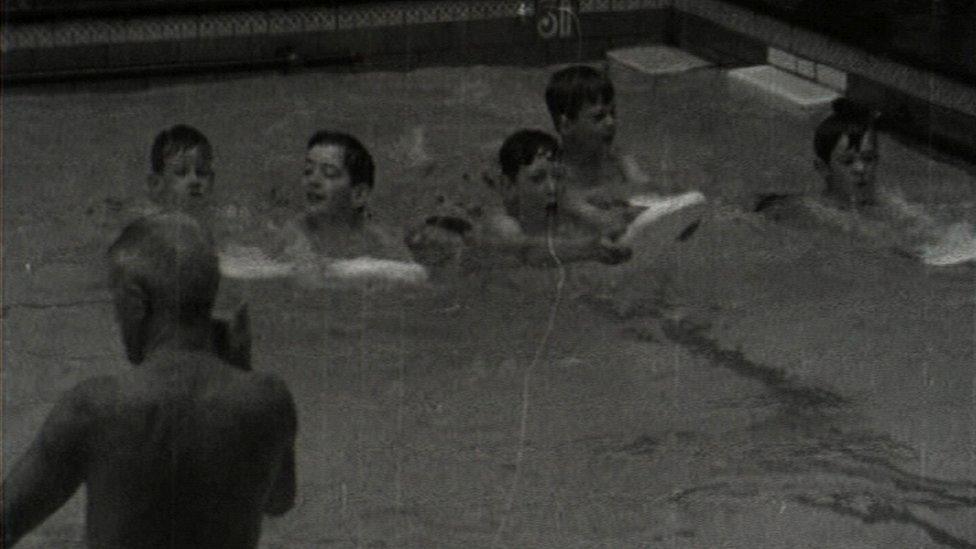
These young boys enjoyed the swimming classes at Templemore Baths in 1969
Mr Mullan was delighted when the restoration opportunity arose, having previously worked on heritage projects in England.
Workers faced a multitude of previously-hidden problems, including dry and wet rot, asbestos, decaying brick, structural movement and a loss of original features.
Despite those challenges, Mr Mullan highlighted the "quirks and characteristics" of the baths.
Those include a central cavity wall, which was highly unusual for the era, as well as beautiful glazed brickwork and a mixture of Flemish and English bonding.
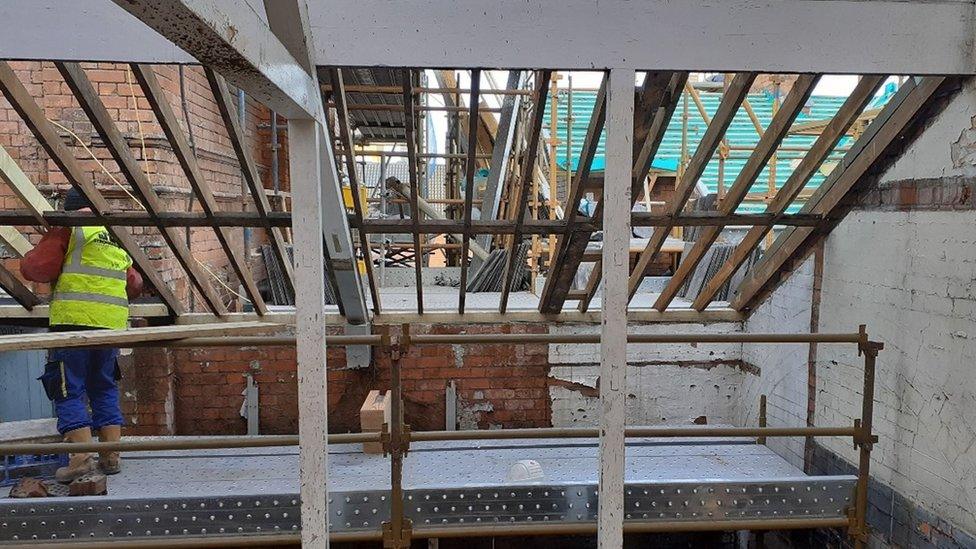
Significant reconstruction was needed, with workers using period materials to retain the original details
The restoration of Templemore Baths involved replacing upwards of 30,000 defective bricks carefully sourced from across Northern Ireland and painstakingly matched with what was retained on site.
For those that couldn't be replaced, exact replicas were created using specialist moulds.
Perfectly recreating history
The team's aim was to reuse as much of the original materials as possible, minimising the carbon footprint of the restoration and "retaining a much more visually-pleasing end product".
For example, they sought help to reconstruct two original window frames but when seven specialist workshops turned down the job a pair of site joiners took it on and spent over a month perfecting them.
"You wouldn't think anything's been done to them, which is actually a compliment in this sort of work," said Mr Mullan.
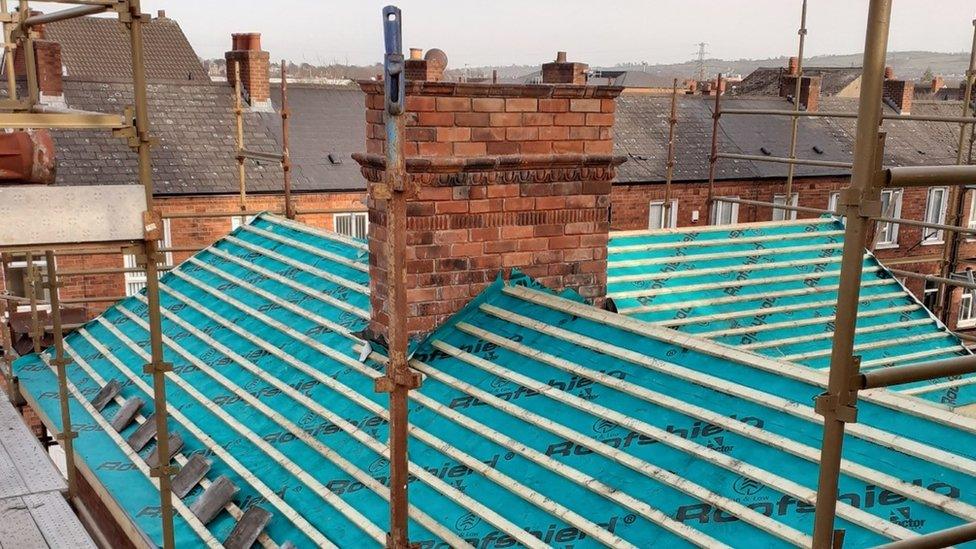
Victorian bricks were sourced from across Northern Ireland to complete the project
He spoke of his team's enthusiasm and adaptability as many retrained to undertake heritage work.
"The methods and materials for restoration construction are very different from modern approaches," he said.
"One of the biggest challenges is ensuring your workforce is educated and understand the reasons why products like cement can't be used in a historic building.
"A quick walk through the baths and the guys started to get very interested.
"For a tradesman, you couldn't whistle a better tune than a challenge.
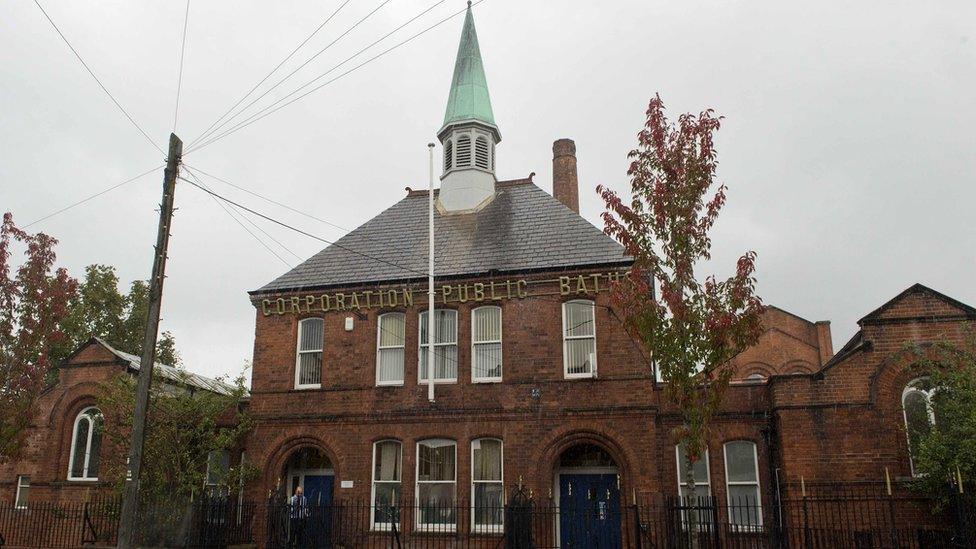
Templemore Baths - pictured prior to reconstruction - are the last functioning Victorian public baths in Ireland
"The atmosphere on site is a very positive one - we get complimented by visitors at how enthused the team are.
"It's a breath of fresh air to walk onto a construction site and not know all the answers."
Victorian baths appeared across Belfast in the 19th Century after an act was passed to encourage local authorities to build public washhouses in an effort to tackle the ongoing cholera epidemic.
"It's ironic that we also worked on this project during a pandemic," said Mr Mullan.
As well as Templemore Baths, there were public baths buildings on Ormeau Road and Falls Road, which have since been repurposed.
Related topics
- Published7 August 2022
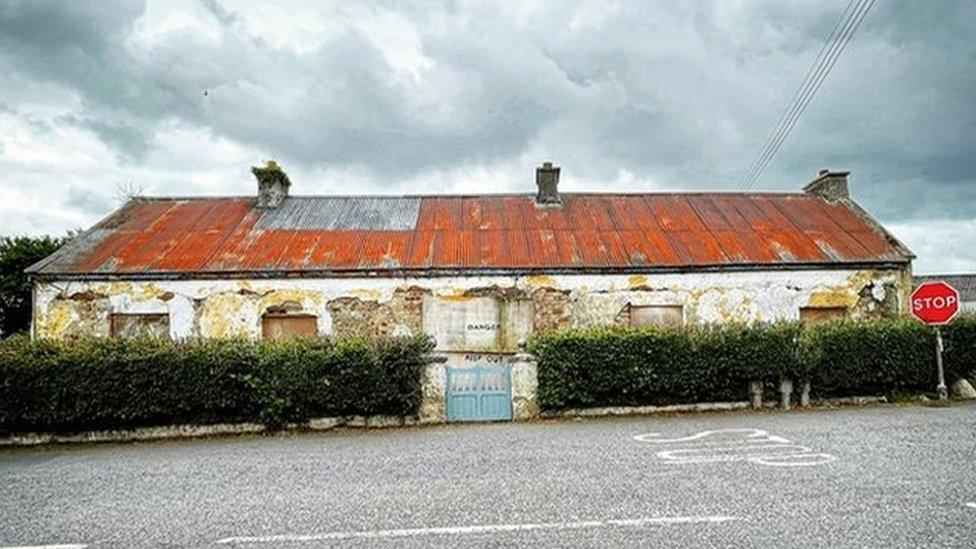
- Published19 April 2022
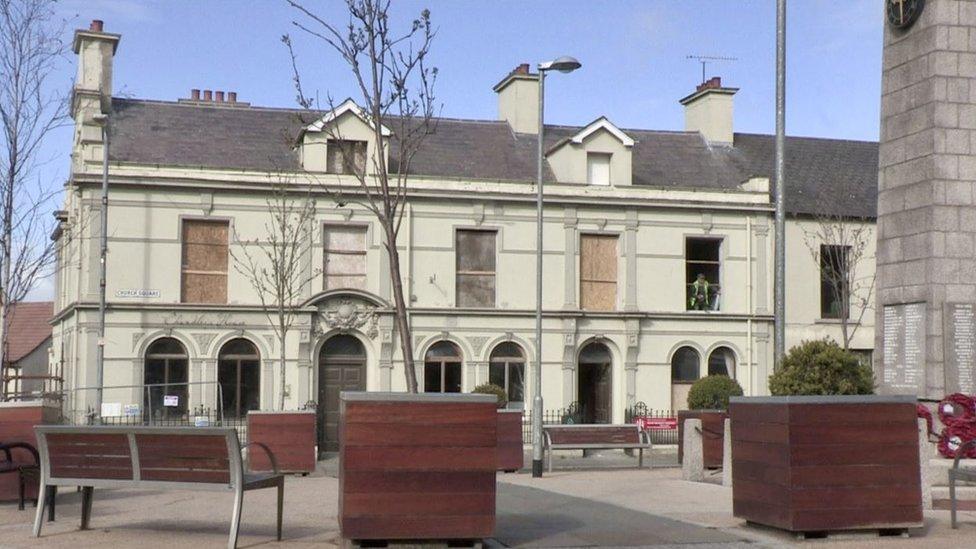
- Published11 January 2021
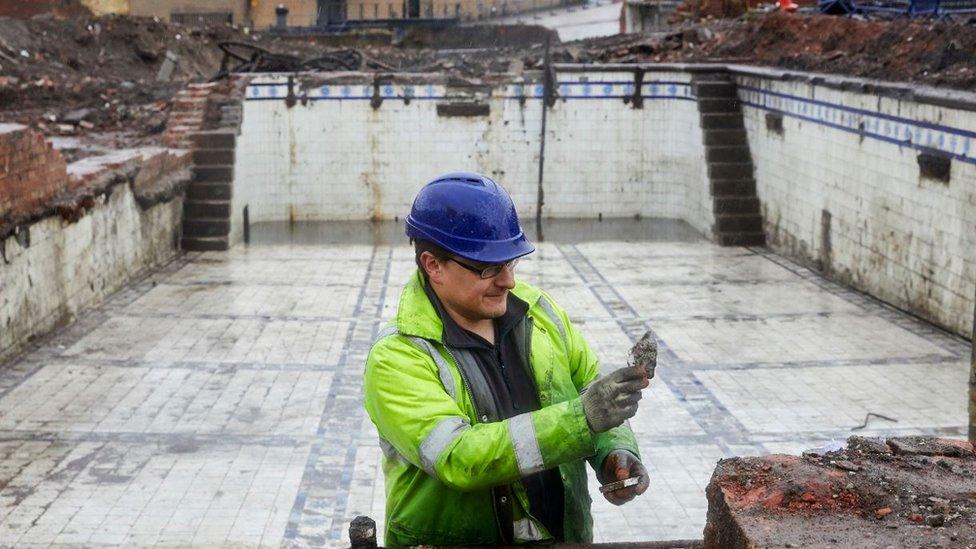
- Published6 August 2019
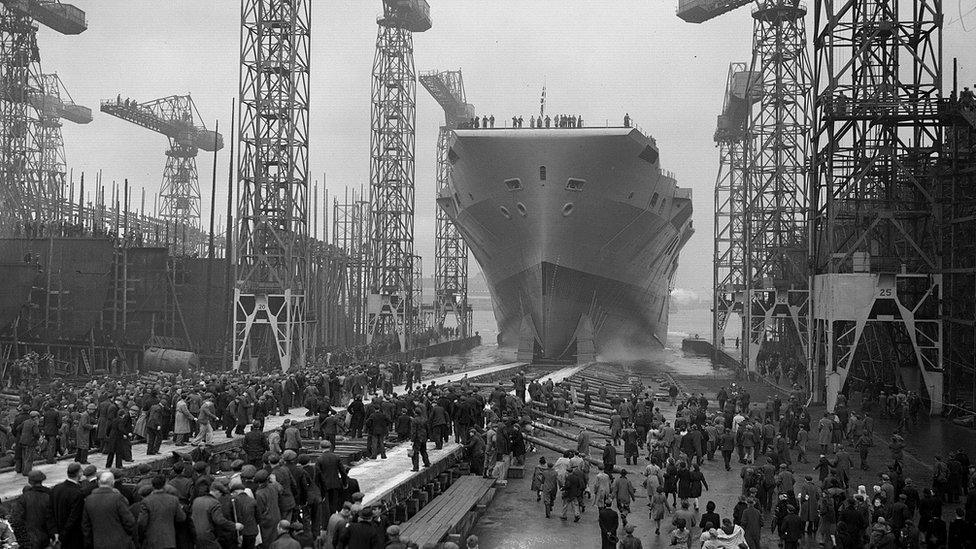
- Published14 December 2018
